Your cart is currently empty!
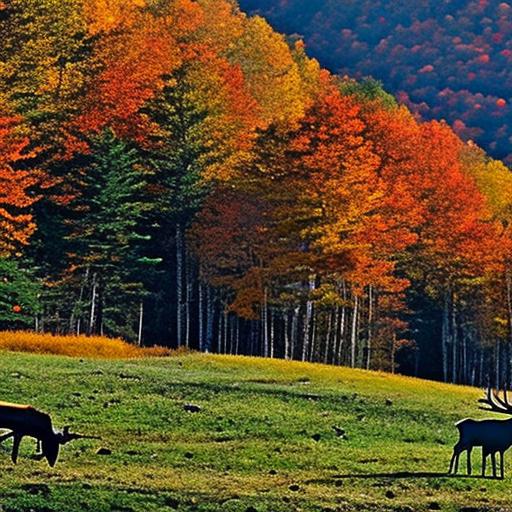
Exploring Pennsylvania’s Elk Hunting Zones: A Guide to Bagging Your Trophy Bull

Pennsylvania is home to a thriving population of elk, making it a popular destination for elk hunting enthusiasts. The state is divided into several elk hunting zones, each with its own unique characteristics and regulations. These zones are carefully managed to ensure the sustainability of the elk population while providing hunters with ample opportunities to pursue this majestic game animal.
Elk hunting in Pennsylvania has a long and storied history, dating back to the early 1900s when the state reintroduced elk into the wild. Since then, the population has flourished, and hunting has become an important part of wildlife management efforts. The thrill of the chase, the challenge of tracking and stalking these elusive animals, and the opportunity to bring home a trophy make elk hunting a beloved pastime for many Pennsylvanians.
Key Takeaways
- Pennsylvania has designated Elk Hunting Zones for hunting enthusiasts.
- Understanding elk behavior and habitat is crucial for a successful hunting adventure.
- Proper preparation, including choosing the right gear, is essential for a successful elk hunt.
- The best times to hunt elk in Pennsylvania are during the early archery season and the late muzzleloader season.
- Elk hunting regulations and license requirements must be followed to avoid legal issues.
Understanding Elk Behavior and Habitat
To increase your chances of a successful hunt, it’s important to understand elk behavior and habitat. Elk are social animals that live in herds, typically consisting of cows (females) and calves, as well as bulls (males). During the breeding season, known as the rut, bulls will compete for dominance and mate with receptive cows.
Elk prefer open meadows and grasslands, as well as forested areas with ample cover. They are most active during the early morning and late afternoon hours, often resting or grazing during the middle of the day. When scouting for elk, look for signs such as tracks, droppings, rubs on trees, and wallows (mud pits where elk roll to cool off).
Spotting elk in the wild can be challenging due to their excellent camouflage and ability to blend into their surroundings. Look for movement or listen for bugling calls, which are distinctive vocalizations made by bulls during the rut. Using binoculars or a spotting scope can also help you spot elk from a distance.
Preparing for Your Elk Hunting Adventure
Elk hunting can be physically demanding, so it’s important to be in good physical condition before heading out into the field. Engaging in regular exercise and cardiovascular activities can help improve your stamina and endurance. Additionally, practicing shooting and marksmanship skills will ensure that you are accurate and confident with your firearm or bow.
Packing the right gear and supplies is essential for a successful elk hunting trip. Be sure to bring appropriate clothing and footwear for the weather conditions you may encounter. Layering your clothing is recommended, as it allows you to adjust your attire as needed throughout the day. Don’t forget essentials such as a hunting knife, binoculars, a compass or GPS device, and a first aid kit.
Safety should always be a top priority when participating in any hunting activity. Before heading out, familiarize yourself with the hunting regulations and safety guidelines specific to elk hunting in Pennsylvania. Let someone know your hunting plans and expected return time, and always carry a means of communication such as a cell phone or two-way radio.
The Best Times to Hunt Elk in Pennsylvania
| Month | Weather | Elk Activity | Success Rate |
|---|---|---|---|
| September | Mild | High | 60% |
| October | Cool | High | 70% |
| November | Cold | Medium | 50% |
| December | Cold | Low | 30% |
Understanding the seasonal changes and how they affect elk behavior can greatly increase your chances of a successful hunt. The rut, which typically occurs in September and October, is an ideal time to hunt elk as bulls are more active and vocal during this period. They are also more likely to respond to calls and decoys.
The best times of day to hunt elk are during the early morning and late afternoon hours when they are most active. During these times, elk are more likely to be on the move, feeding or traveling between bedding areas and feeding grounds. It’s important to be in position well before sunrise or sunset to maximize your chances of spotting elk.
Weather conditions can also impact elk behavior and movement patterns. In general, cooler temperatures and overcast skies can increase elk activity, while hot and sunny conditions may cause them to seek shade and rest. Pay attention to weather forecasts and plan your hunting trips accordingly.
Elk Hunting Regulations and License Requirements
Before embarking on an elk hunting adventure in Pennsylvania, it’s important to familiarize yourself with the state’s elk hunting regulations. These regulations are in place to ensure the sustainability of the elk population and to promote ethical hunting practices.
To hunt elk in Pennsylvania, you must possess a valid elk hunting license. The Pennsylvania Game Commission conducts an annual elk license drawing, and successful applicants are awarded a specific tag that allows them to hunt elk during the designated season. It’s important to apply for the drawing well in advance and to carefully read and follow all instructions provided by the Game Commission.
There are also rules and restrictions that hunters must adhere to when hunting elk in Pennsylvania. These include specific bag limits, weapon restrictions, and reporting requirements. It’s important to thoroughly review the regulations before heading out into the field to ensure compliance and avoid any potential legal issues.
Choosing the Right Hunting Gear

Having the right gear is essential for a successful elk hunting trip. Some essential gear items for elk hunting include a reliable firearm or bow, ammunition or arrows, a quality scope or sight, a comfortable backpack or daypack, a headlamp or flashlight, and a range finder.
When it comes to clothing, it’s important to dress in layers to accommodate changing weather conditions. Start with a moisture-wicking base layer, followed by an insulating layer such as fleece or wool, and finish with a waterproof and windproof outer layer. Opt for camouflage patterns that blend well with the natural surroundings.
Footwear is another important consideration. Choose boots that are comfortable, waterproof, and provide good ankle support. Insulated boots are recommended for colder weather conditions, while lightweight hiking boots may be more suitable for warmer temperatures.
When selecting a firearm or bow for elk hunting, choose a caliber or draw weight that is appropriate for the size of the animal. Consult with experienced hunters or a knowledgeable firearms dealer to determine the best option for your specific needs and preferences.
Scouting Elk Hunting Zones: Tips and Techniques
Scouting is an important part of elk hunting, as it allows you to familiarize yourself with the terrain, identify elk sign, and locate potential hunting spots. Start by studying maps of your chosen hunting zone and identifying areas that are likely to hold elk, such as meadows, water sources, and transition zones between different types of habitat.
Once you have identified potential hunting areas, it’s time to hit the field and gather firsthand information. Look for signs of elk activity such as tracks, droppings, rubs on trees, and wallows. Pay attention to bedding areas, feeding grounds, and travel corridors. Using trail cameras can also be a valuable tool for monitoring elk movement patterns and identifying individual animals.
Technology can also be a useful tool for scouting elk hunting zones. GPS devices or smartphone apps can help you navigate the terrain and mark important waypoints. Mapping software can also provide valuable information about elevation, topography, and vegetation types.
When scouting, be sure to do so well in advance of your hunting trip to allow yourself enough time to gather information and make informed decisions about where to set up camp and hunt. Remember that elk are constantly on the move, so what may be a productive area one day may not be the next.
Tracking and Stalking Elk: Hunting Strategies
Tracking elk in the wild requires patience, persistence, and a keen eye for detail. Look for fresh tracks in soft soil or mud, paying attention to the size and shape of the hoof prints. Follow tracks that lead in the direction you want to go, looking for additional signs such as droppings or rubbed trees.
Stalking elk requires stealth and careful movement. Move slowly and quietly, using available cover such as trees, rocks, or vegetation to conceal your presence. Avoid making sudden movements or noise that could alert the elk to your presence. Use the wind to your advantage, always positioning yourself downwind of the elk to avoid being detected by their keen sense of smell.
When you spot an elk, take your time to assess the situation and plan your approach. Look for a clear shooting lane and a safe backstop for your shot. Use natural features such as hills or vegetation to conceal your movement as you close the distance. Be patient and wait for the right moment to take your shot, ensuring that you have a clear and ethical shot opportunity.
Field Dressing and Processing Your Elk
Field dressing an elk is an important step in preserving the quality of the meat and preparing it for transport. Start by making a shallow incision along the belly from the chest to the pelvis. Carefully remove the internal organs, being cautious not to puncture the stomach or intestines. Remove the heart, liver, and kidneys, as these can be saved for consumption if desired.
Once the elk is field dressed, it’s important to cool it down as quickly as possible to prevent spoilage. Hang the carcass in a cool, shaded area or place it in a cooler with ice or ice packs. If you are unable to process the meat immediately, consider contacting a local meat processor who can professionally handle the butchering and packaging.
When processing elk meat, it’s important to handle it with clean hands and equipment to prevent contamination. Remove any excess fat or connective tissue from the meat, as this can affect the flavor and texture. Cut the meat into manageable portions such as steaks or roasts, and package them in freezer-safe bags or containers.
Celebrating Your Elk Hunting Success: Recipes and Cooking Tips
After a successful elk hunting trip, it’s time to celebrate and enjoy the fruits of your labor. Elk meat is lean, flavorful, and versatile, making it a popular choice for many delicious recipes. Whether you prefer grilling, roasting, stewing, or sautéing, there are countless ways to prepare and enjoy elk meat.
One popular recipe for elk meat is grilled elk steaks. Marinate the steaks in a mixture of olive oil, soy sauce, garlic, and your favorite herbs and spices. Grill the steaks over medium-high heat until they reach your desired level of doneness. Serve with grilled vegetables or a side salad for a complete meal.
Another delicious option is elk chili. Brown ground elk meat in a large pot with onions and garlic. Add diced tomatoes, kidney beans, chili powder, cumin, and other seasonings to taste. Simmer the chili for at least an hour to allow the flavors to meld together. Serve with shredded cheese, sour cream, and cornbread for a hearty and satisfying meal.
When cooking elk meat, it’s important to remember that it is leaner than beef or pork and can easily become dry if overcooked. Use a meat thermometer to ensure that the internal temperature reaches the recommended safe temperature without overcooking. Resting the meat for a few minutes before slicing or serving will also help retain its juiciness.
In conclusion, elk hunting in Pennsylvania offers hunters a unique and thrilling experience. By understanding elk behavior and habitat, preparing properly for your hunt, and following all regulations and safety guidelines, you can increase your chances of a successful and enjoyable hunting trip. And once you’ve harvested an elk, don’t forget to celebrate your success by preparing delicious recipes and sharing your bounty with friends and family.
If you’re interested in hunting elk in Pennsylvania, you might also want to check out this article on how to hunt raccoons during the day. Raccoon hunting can be an exciting and challenging pursuit, and this article provides valuable tips and techniques for a successful hunt. Whether you’re a seasoned hunter or just starting out, learning new hunting skills can enhance your overall hunting experience. So, if you’re looking to expand your hunting knowledge beyond elk, click here to read the article: How to Hunt Raccoons During the Day.
FAQs
What are PA elk hunting zones?
PA elk hunting zones are designated areas in Pennsylvania where licensed hunters are allowed to hunt elk during the designated hunting season.
How many PA elk hunting zones are there?
There are currently four PA elk hunting zones in Pennsylvania.
What is the hunting season for elk in PA?
The hunting season for elk in PA typically runs from early November to mid-December.
How do I obtain a license to hunt elk in PA?
To obtain a license to hunt elk in PA, you must apply through a lottery system. Applications are typically accepted in April and May, and the lottery drawing takes place in early June.
What are the regulations for hunting elk in PA?
There are several regulations for hunting elk in PA, including specific hunting dates, hunting zones, and bag limits. Hunters must also possess a valid hunting license and elk hunting permit.
What is the bag limit for elk hunting in PA?
The bag limit for elk hunting in PA is one elk per licensed hunter per season.
What is the population of elk in PA?
As of 2021, the estimated population of elk in PA is around 1,500.

Herb has been a longtime lover of the outdoors. Whether it be hunting, camping, fishing or just getting outside to reset. Proud father and animal lover. Bourbon anyone?

by
Tags:
Comments

Categories
- Big Game Hunting (301)
- Deer (202)
- Reviews (3)
- Shooting (16)
- Slingshot (1)
- Small Game Hunting (42)
- Upland Hunting (126)
- Waterfowl Hunting (3)

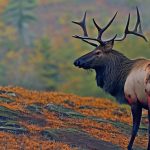
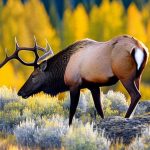
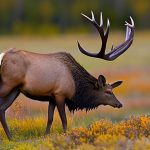
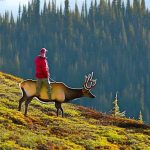
Leave a Reply